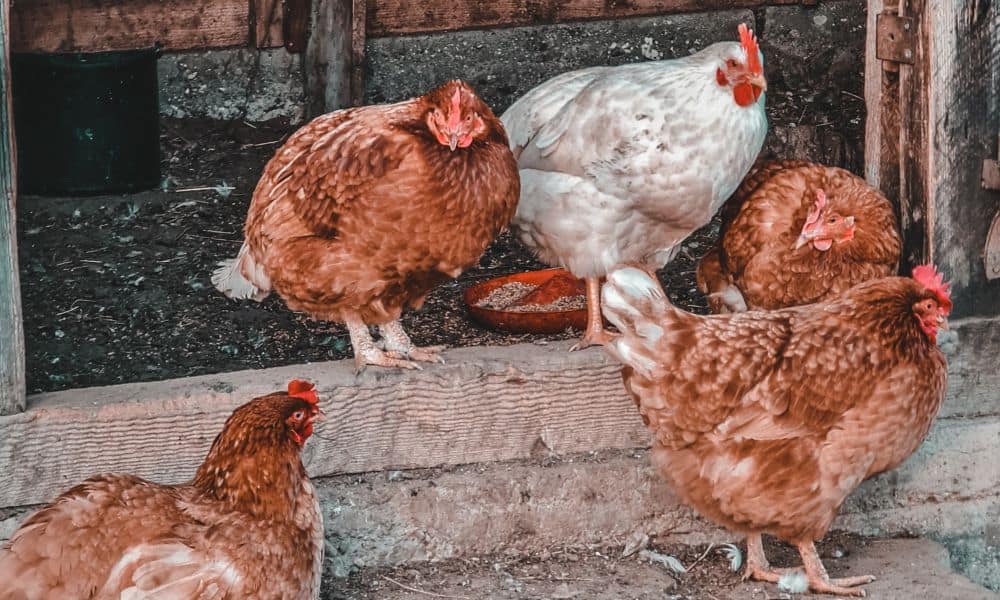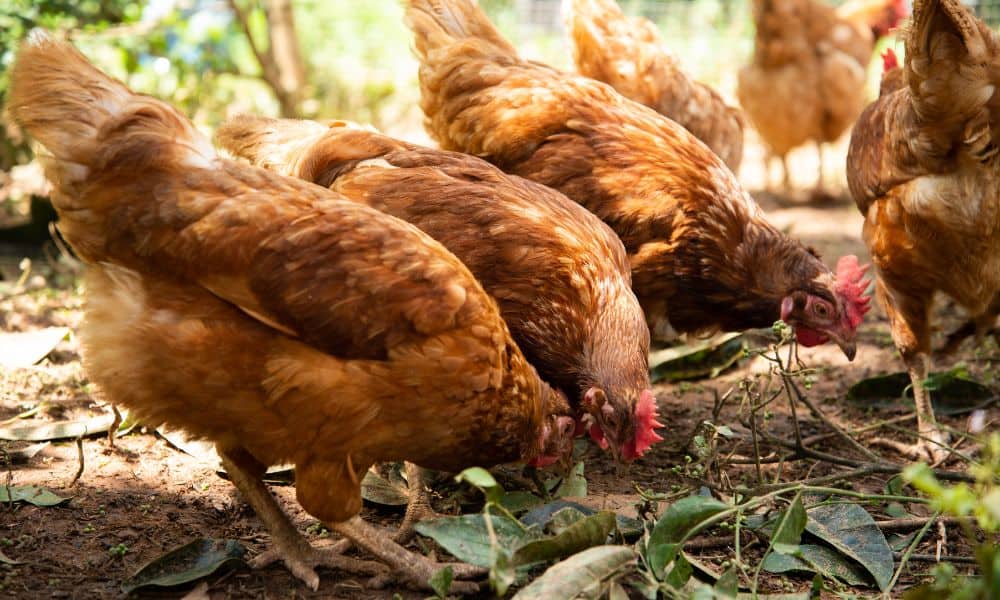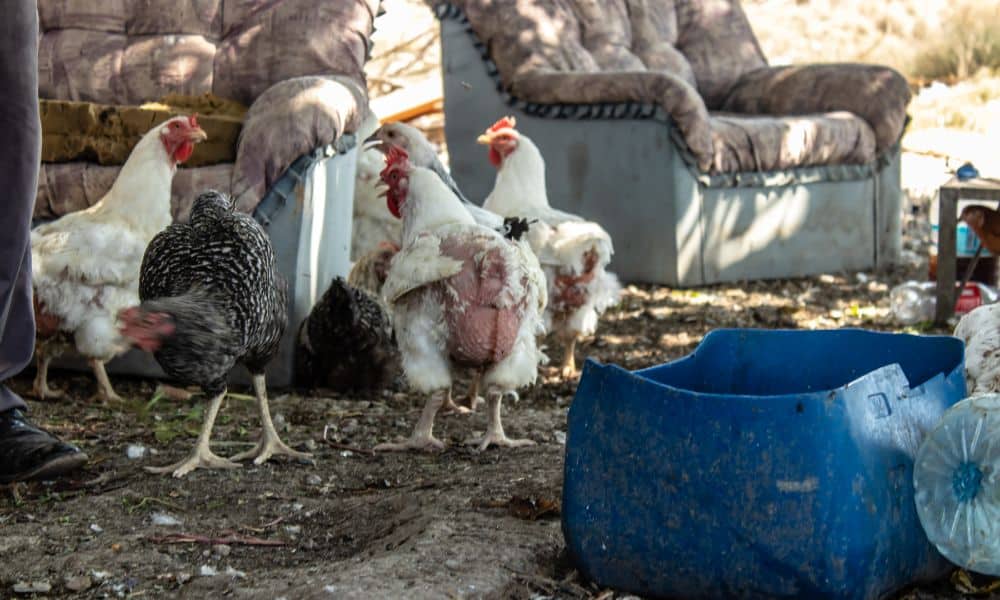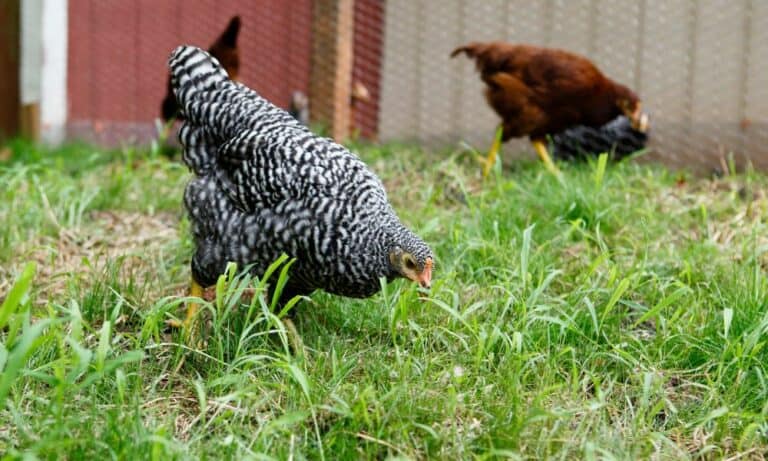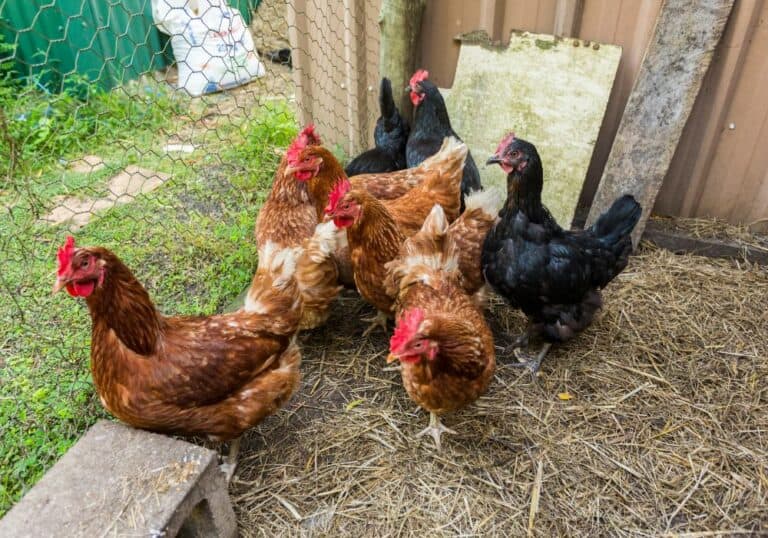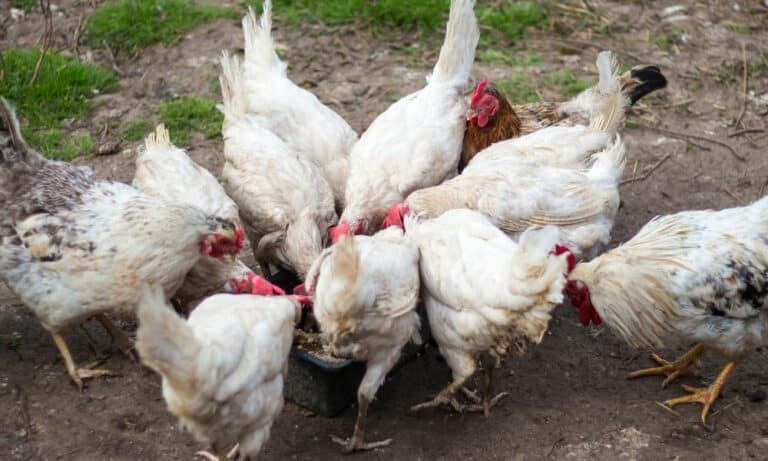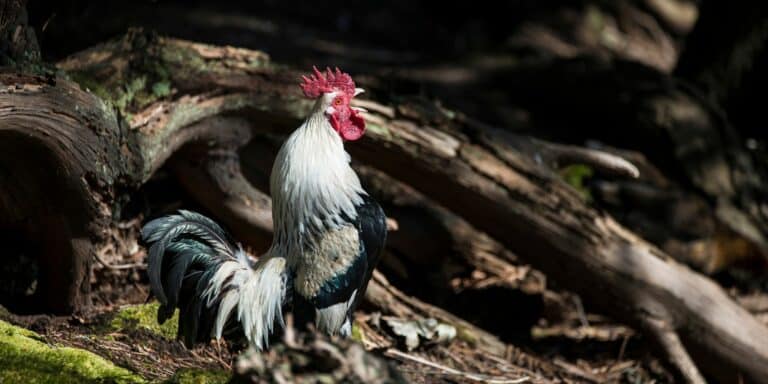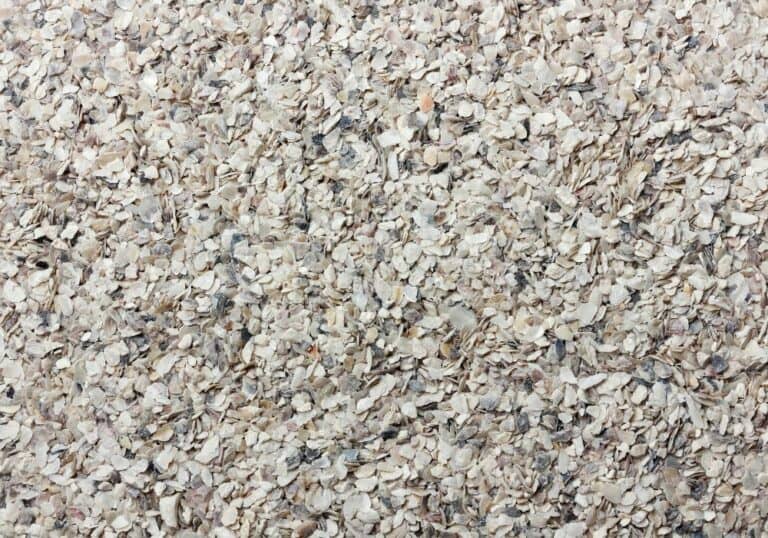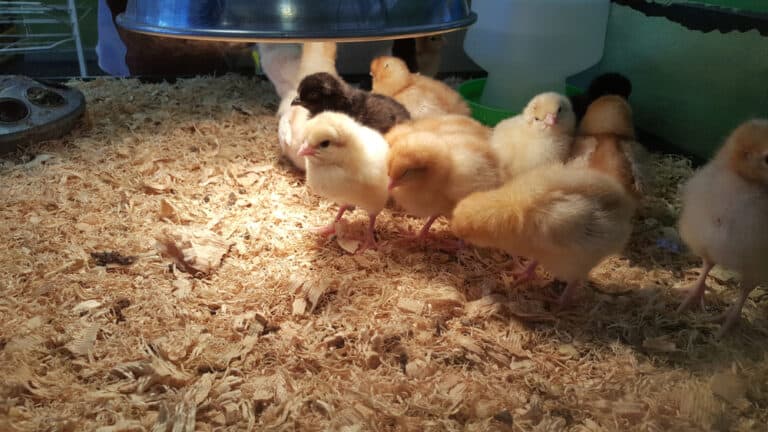Besides a few rare single cases, most hens lay eggs several times a week, while others do it in cycles. Some breeds lay eggs throughout the year, while others stop production during winter days. In most cases, how often do chickens lay eggs depends on their breed, season, living conditions, care level, and feed quality they get.
Typically, heirloom breeds start egg production later and lay fewer eggs per year. On the other hand, you can expect 4 to 7 eggs a week from hens that are mainly bred only for laying eggs. In any case, most chickens lay more than twice as many eggs as a century ago. Let’s check.
How Often Do Chickens Lay Eggs?
The laying egg frequency depends on a few key factors, including hen breed, provided living conditions, and a way of feeding.
Some breeds are naturally better egg layers. However, feed quality and surroundings with adequate temperature and humidity significantly impact this feature.
1. Chickens’ breed
You can expect to collect 50 to 350 eggs per hen annually, depending on the breed you keep. For instance, Isa Brown, Rhode Island Red, and Leghorn produce over 300 eggs yearly, while official data show a record of 364 eggs a year in Australorp hens.
Best egg-laying breeds |
|||
| Hen breed | Start laying eggs | Number of eggs per week | Number of eggs per year |
| Isa Brown | 4 months | 6 | 300 to 350 |
| Rhode Island Red | 4 to 5 months | 5 to 7 | 200 to 300+ |
| Hybrids | 4 to 5 months | 5 to 6 | 250 to 300+ |
| Leghorn | 18 weeks | 4 (standard) to 6 (white) | Up to 300 |
| Plymouth Rock | 16 to 22 weeks | 4 to 5 | 200 to 300 |
| Australorp | 22 to 24 weeks | 4 to 5 | 250 with a record of 364 |
| Easter Egger | 20 to 25 weeks | 4 | 200 to 280 |
| Sussex | 8 months | 3 to 6 | 240 to 260 (180 to 320) |
| Wyandotte | 5 months | 3 to 6 | >300 |
| Buff Orpington | 5 to 7 months | 3 to 5 | 200 to 280 |
| Ameraucana | 6 months | 3 to 4 | 180 to 200 |
| Barnevelder | 8 to 10 months | 3 to 4 | 170 to 200 |
| Delaware | 4 to 8 months | 3 to 4 | 200 |
| Welsummer | 22 weeks | 3 to 4 | 160 to 250 |
| Welsummer Bantam | 5 months | 3 to 4 | 150 to 200 |
| Java | 6 to 7 months | 3 to 4 | 150 to 180 |
| Cochin | 8 to 9 months | 2 to 3 | 150 to 180 |
| Houdan | 22 weeks | 2 to 3 | 150 to 230 |
| Silkie | 7 to 9 months | 2 to 3 | 100 to 120 |
| Japanese Bantam | 40 to 45 weeks | 1 to 2 (12 per 2 weeks with a week or two off before the next cycle) | 75 |
| Ayam Cemani | 5 to 6 months | 1 to 2 (in cycles) | 60 to 100 |
| Sultan | 5 months | 1 | 50 to 60 |
In other words, good-laying hens produce at least five eggs a week. On the other hand, chickens kept as pets, for meat production, or for shows never reach such a high egg production level.
You can notice that particular hen breeds produce eggs that are different in color and size. These features also vary depending on the chickens’ age and feed quality. Eggs are typically small, medium, large, or extra-large, while their color can be white, tan, light brown, terracotta, dark brown, blue, and green.
Egg color and size by hen breed |
||
| Hen breed | Egg color | Egg size |
| Isa Brown | Light brown | Large and extra large |
| Rhode Island Red | Brown | Large |
| Hybrids | Blue to greenish | Large |
| Leghorn | White | Medium to large |
| Plymouth Rock | Light brown, brown | Large |
| Australorp | Light brown | Medium |
| Easter Egger | White, tan, pink, blue, green, dark brown | Medium |
| Sussex | Cream, light brown | Medium |
| Wyandotte | Brown, sometimes with speckles | Large |
| Buff Orpington | Light brown | Large |
| Ameraucana | Blue, sometimes greenish | Medium |
| Barnevelder | Chocolate brown, dark brown | Large |
| Delaware | Light brown | Large to jumbo |
| Welsummer | Terracotta, deep red | Large |
| Welsummer Bantam | Terracotta | Small |
| Java | Tinted, dark brown | Large |
| Cochin | Brown | Medium |
| Houdan | White, cream | Small |
| Silkie | Cream | Small to medium |
| Japanese Bantam | White, cream, pale brown, occasionally speckled | Tiny to small |
| Ayam Cemani | Cream with a pink hue | Medium |
| Sultan | White | Small |
Most people believe that eggs taste the same, regardless of hen breed. However, experts claim that Japanese Bantam produces the tastiest eggs among all known chicken types.
2. Hen type
You can expect different egg production depending on the chicken’s purpose. There are three hen categories besides wild chickens with characteristics directly affecting the number of eggs they can lay.
-
Chickens for egg production
This chicken type produces large egg quantities over a short period and typically reduces laying after a year or two. You can expect their productivity to decrease by approximately 20% each following year.
When you need reliant egg producers, you should look for breeds in this group. Interestingly, hens born in the spring are typically good layers and start next winter already. Unfortunately, the best-laying hens are typically poor broodiness.
Installing lights inside a coop during cold months is the best way to stimulate hens to lay even more eggs. Prolonged lights of 14 to 16 hours a day artificially stimulate hens to keep producing eggs regardless of the season.
-
Dual-purpose hens
Chickens in this group are equally suitable for laying eggs and producing meat. You shouldn’t expect more than 3 to 4 eggs per week, but they are excellent table birds after the egg production period finishes.
Most of these chickens lay eggs for 12 to 18 months before considering them spent. Such birds grown in industrial concerns go to slaughter after this period.
-
Heritage hens
This chicken type starts laying eggs later and has a lower production rate but is productive over a longer period. The actual egg number produced annually significantly varies depending on the hen breed. Most heritage breeds provide 1 to 3 eggs a week, but you can rely on them to lay eggs for 3 to 5 years.
-
Wild chickens
Unlike domesticated chickens, those living in the wild (Junglefowl) lay only about 10 to 14 eggs annually, typically in a clutch. It is enough for reproduction, so there is no need to have higher production.
In the wild, hens produce eggs only when roosters are nearby to fertilize them. Domestication has affected hens, and they lay eggs regardless of whether males are present. As a result, most eggs are unfertilized, and they can’t develop into chicks.
Interestingly, even feral hens or those kept in free-range conditions reduce egg laying compared to industrially farmed chickens. For instance, game birds like American Gamefowl and Old English Game produce less than 150 eggs yearly.
3. Hen age
Most chickens start egg production at 5 to 8 months of age and typically stop once they reach 3 to 4 years of age. Be aware that egg number reduces after a year or two, but their weight slightly increases at the same time.
The production peak is during the next 8 to 12 weeks and declines to about 65% after the first year, depending on the breed. The only exception is heirloom breeds that start laying eggs later but with a prolonged production period.
4. Hen’s health condition
Only healthy hens can reach high production since bacterial and parasitic diseases negatively affect egg-laying. Besides, injured hens reduce egg production until their bodies recover. Remember that chickens suffering from stress never produce an optimal egg number.
5. Molting
Molting is a regular annual process of feather replacement. At a particular time of the year, chickens drop their old plumage and grow new ones. Since this stressful process often happens in the fall, you can expect egg-laying reduction or cessation while lasting.
6. Season
Seasons directly affect hens’ egg-laying because the sunlight and temperatures significantly impact production. You can expect chickens to have the highest oviposition level in summer.
Some breeds can keep production during winter, but the number of eggs will decrease slightly. On the other hand, some hens stop laying until spring.
7. Housing
Your backyard hens need a quality coop to protect them from harsh weather conditions and possible predators. You should provide 3 to 5 sq ft (0.28 – 0.46 m2) per chicken and at least one nest box per 4 to 5 hens.
8. Nutrition
Adequate feed provides sufficient energy and enough nutrients for hens’ growth, health, and egg production. Well-fed chickens lay more eggs, plus they are more sizable and have harder shells.
If you want to get the highest egg production, feeding your hens with a feed designed for this purpose is crucial. Such a diet includes a precisely calculated ratio of insects, grains, grass, fruits, and veggies to balance protein, vitamins, and minerals as required.
Summary
Nowadays, most hens lay twice as many eggs as a hundred years ago, but their laying period is significantly shorter. They reach max egg production within a year or two, and then the number of eggs drops.
On the other hand, you can expect heirloom breeds to bring you one or two eggs a week during a season. That way, they keep their strength and can keep producing eggs for several years.

